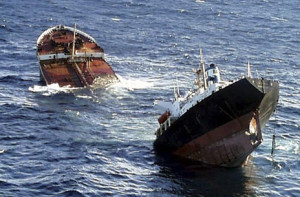 TOURISM IMPACT STUDIES & CLAIMS FOR ECONOMIC LOSS
TOURISM IMPACT STUDIES & CLAIMS FOR ECONOMIC LOSS
IMPACT ASSESSMENT
When an incident occurs, a speedy assessment of the likely level of economic loss for the local tourism industry is essential. CMA has undertaken such studies in N Spain, S W France, the island of Guimaras in the Philippines and an affected area on the west coast of S Korea. All of these reviews followed contamination by an oil spill.
In each case the economic loss has been based on the average of two reviews. The first is a top level review using regional/ national data to estimate the value of tourism in the affected area. The second is a bottom up approach based on business supply. The two estimated levels of economic activity are averaged and then a range of loss ratios are applied to estimate the likely level of loss. These ranges of loss are based on experience gained from similar incidents but also reflect the:
- Type of tourism activity undertaken in the affected area,
- Timing of the incident relative to the seasonality of tourism in tourism activity and its booking patterns,
- Visitor/ tourist profile; the balance between domestic and overseas visitors& day and stay visitors,
CLAIM REVIEWS
Tourism claims can arise either from a major incident such as an oil spill or from an individual event namely a fire or explosion.
In each case we visit the business to understand the normal trading patterns and to review these in the context of the facilities provided. This understanding is of paramount importance if the impact of the incident is to be fully identified. It is important to understand how the business would have traded had the incident not occurred in order to assess the impact.
Even without the incident, there will probably be other factors that cause trading to change. These can include external and internal business issues. External issues can include:
- Changing economic factors such as fuel price increases,
- Economic recessions or sharp increases in growth
- Different weather patterns during a main season
- Volcanic eruptions
- Changing social trends
- Changes in the local communication networks,
- Local area redevelopment plans
- Additions/ reductions in the local competition
Internal factors can include:
- Tariff changes,
- Product changes – extensions or demolitions,
- Key staff changes: new managers or other key staff
- Changes to marketing budgets and activity,
- Operator induced changes in response to the incident
The assessment of economic loss should reflect the impact of any of the above, or other, changes on the business. Then a projected revenue for the claim period can be assessed which should also incorporate changes in trading trends. In general we prefer to identify trading trends over a three year period rather than a three year average revenue. An average revenue eliminates the impact of such trading trends which can either indicate growing or falling revenues.
Finally once the level of revenue loss has been identified, an allowance needs to be made for cost savings. A cost saving reflects those costs that have been saved as a result of the decline in revenue and can include such items as food and drink costs, saved labour costs, saved energy and commissions etc.. Finally any additional costs incurred by the operator should be added to the loss.
